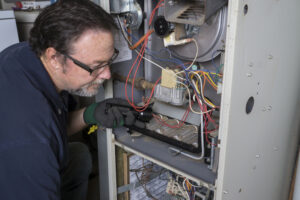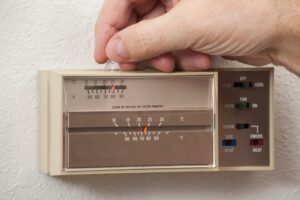What to Know About Duct Design and Configuration for Commercial HVAC Installation
Originally published September 2013, updated August 2016
Before a duct system is designed for a commercial application, load estimates need to be calculated. Proper duct design will ensure adequate air distribution and will even protect the ducts. This includes deciding upon the location for supply and return registers and diffusers. Once all necessary calculations are completed, duct design can be determined. Learn more about how correct duct design can increase air conditioning efficiency and savings in your Mokena, Illinois, business.
The Criteria for Proper Duct Design
Several factors need to be considered to ensure proper duct design. Your HVAC contractor will perform tasks that include determining:
Space Availability
Of course, there needs to be enough space to run the ductwork, but there are other factors that affect the actual space availability and design of the ductwork. Ceilings, duct chases, and obstructions like beams, and walls all compete for space. Coordination of a duct design must also consider communication conduits, sprinkler piping, audio speakers, and light fixtures. Larger branch ducts require even more consideration since most of the conduit service utilities are centralized in the core of the building.
Installation Costs
The costs of installation are determined by the complexity of the system and the height complexity of the site. Typically, about 85 percent of the installation costs go to labor. Professional duct designers will always seek ways to modify the configuration to minimize costs for businesses.
Air Friction Loss
Duct size and shape affect air friction loss. Flexible ductwork has the highest friction loss per linear foot, while rounded galvanized ductwork has the least. High-quality smooth fittings should be used to reduce the system’s air pressure drop. In addition, as few as possible should be used. Compared with a rectangular system with a long route, a direct route with round ducts ensures minimal air friction loss.
Level of Noise
There are many factors that affect noise level. Undersized systems are too loud, and poorly installed fittings can cause turbulence that increases the noise level. Often, dampers are used to lessen noise levels and need to be located away from registers and diffusers.
Airflow Leakage and Duct Heat Transfer
Ductwork that runs from warm areas to cold areas loses efficiency. Uninsulated and leaky ducts will result in higher operating costs and occupant discomfort. Leaky ducts can even cause odors.
Code Requirements
To prevent many common problems, there are energy codes that dictate the level of insulation and duct sealing needed. These codes must be observed and vary from region to region.
Commercial HVAC Contractors
At Climate Master Mechanical, Inc., we can seal faulty ducts and provide duct cleaning services. We can also provide advice regarding the design, installation, and maintenance of your ductwork. For more information about ducts or our duct-related services, contact us today at 708-597-5470.
You May Also Like

3 Ways Ductwork Impacts HVAC System Performance in Mokena, IL
Ductwork is critical to making any central HVAC system work efficiently. Here are three ways your ductwork influences the performance of the… Continue Reading 3 Ways Ductwork Impacts HVAC System Performance in Mokena, IL…

3 Furnace Odors and What They Mean in New Lenox, IL
When you first turn on a brand-new furnace, you might expect a few mild odors to appear as the system establishes itself.… Continue Reading 3 Furnace Odors and What They Mean in New Lenox, IL…

Do I Need to Replace My Old HVAC Thermostat in Mokena, IL?
A thermostat is like the brain of your HVAC system. If it doesn’t function properly, no part of the HVAC system in… Continue Reading Do I Need to Replace My Old HVAC Thermostat in Mokena, IL?…
